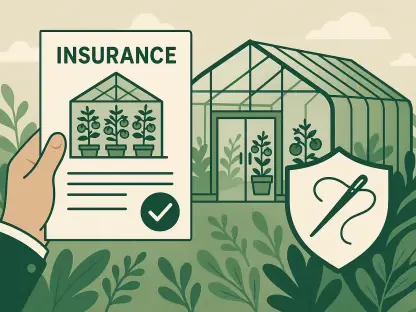Meet Simon Glairy, a renowned expert in insurance and Insurtech, with a deep focus on risk management and AI-driven risk assessment. With years of experience driving innovation in the industry, Simon has a unique perspective on transforming sales cultures and leveraging technology to meet client needs. In this engaging conversation, we dive into his insights on rebuilding teams, fostering motivation, creating structured training programs, and the critical role of mentorship in sustaining high performance. We also explore his passion for serving small businesses and balancing professional leadership with community involvement.
How did your journey in the insurance and Insurtech space shape your approach to leadership, especially when it comes to transforming sales cultures?
My journey in insurance and Insurtech has been a blend of traditional industry knowledge and cutting-edge tech innovation. Early on, I saw how disconnected sales teams could become without strong leadership or a clear vision. That shaped my belief that transformation starts with people—understanding their needs and aligning them with organizational goals. With my focus on risk management and AI-driven solutions, I’ve learned to integrate data insights into sales strategies, making processes more efficient while keeping the human element at the core. It’s about creating a culture where technology empowers rather than replaces personal connection.
When stepping into a role with a struggling sales team, what are some of the first challenges you typically notice, and how do you begin addressing them?
One of the first things I often see is a lack of trust or direction—high turnover usually stems from that. Team members might feel undervalued or unclear about their future. My initial step is to listen. I hold one-on-one conversations to understand their frustrations and aspirations. From there, I focus on quick wins—small changes like clarifying roles or providing immediate support—that rebuild confidence. It’s about showing the team that their growth matters as much as the company’s bottom line.
Can you walk us through your process for rebuilding a sales team, especially when it comes to hiring and nurturing new talent?
Rebuilding starts with a clear vision of the team I want to create—one that’s diverse in thought and skill but united in purpose. During hiring, I look for curiosity and resilience over just experience. Once they’re on board, I prioritize structured onboarding to set them up for success. That means pairing them with mentors, giving them access to tools, and setting realistic early goals. I also check in regularly to provide feedback, not just on performance but on how they’re feeling. Nurturing talent is about creating an environment where they can thrive long-term.
Why do you think a defined leadership structure is so vital for a sales team, and how have you seen it impact performance?
A defined leadership structure gives everyone a clear sense of accountability and direction. When roles like directors or team leads are well-defined, it eliminates confusion about who to turn to for guidance or decisions. I’ve seen it create a ripple effect—team members feel supported, which boosts their confidence to take ownership of their work. Performance improves because there’s a framework for growth; people know what they’re working toward and who’s there to help them get there.
How do you uncover what truly motivates your sales team, and how do you tailor incentives to match their individual drivers?
Uncovering motivation starts with asking the right questions and really listening. I make it a point to understand what excites each person—some might be driven by financial bonuses, while others value recognition or personal time. I’ve tailored incentives like flexible schedules for those who prioritize family or unique rewards like travel vouchers for hitting team goals. The key is to follow through; if you ask for input but don’t act on it, you risk losing trust. Personalizing incentives shows the team you see them as individuals, not just numbers.
Listening to your team is often emphasized, but how do you ensure their feedback leads to meaningful action?
Listening is only half the battle; the other half is demonstrating that you’ve heard them. I make it a habit to summarize what I’ve learned from their feedback during team meetings and outline specific steps we’ll take. For instance, if the team flags a need for better tools, I work with leadership to prioritize that investment and keep them updated on progress. Transparency is crucial—it shows I’m not just paying lip service but am committed to making changes that support their success.
What’s your philosophy on training and development for sales teams, and why do you see it as a cornerstone of success?
Training and development are non-negotiable because they bridge the gap between potential and performance. My philosophy is to create a continuous learning environment—not just a one-and-done onboarding. A dedicated role for learning ensures consistency and keeps training relevant as the industry evolves. I’ve seen firsthand how structured programs can accelerate a new hire’s ramp-up time, turning them into productive contributors faster. It also builds confidence, which directly translates to better client interactions and results.
Can you share what goes into creating a centralized sales resource or playbook, and how it benefits a team?
A sales playbook is essentially a roadmap for success—it’s a centralized resource that outlines best practices, daily routines, and proven strategies. I include everything from call scripts to objection handling, client follow-up processes, and even tips for leveraging tech tools like AI for risk assessment. For a team, especially new hires, it’s a lifeline. It reduces guesswork, ensures consistency in how we approach clients, and helps everyone align with the company’s standards. It’s a living document, too—I encourage feedback to keep it relevant.
How do standardized sales routines contribute to both efficiency and a better client experience?
Standardized routines create a rhythm for the team, cutting down on wasted time and ensuring nothing slips through the cracks. For example, setting specific times for follow-up calls or using a checklist for client onboarding ensures every step is covered systematically. This efficiency frees up time to focus on personalizing interactions with clients, which elevates their experience. When a client feels the process is seamless and professional, it builds trust—something critical in insurance where decisions are often high-stakes.
What fuels your passion for supporting small businesses with their insurance needs, and what challenges do you see them facing?
Small businesses are the backbone of our economy, yet they often operate with razor-thin margins and little room for error. My passion comes from knowing that the right insurance can protect their livelihood—their heart and soul. The biggest challenge I see is a lack of awareness or understanding; many don’t realize they’re underinsured until it’s too late. There’s also the stress of navigating complex policies. I’m driven to simplify that process, using tech and education to help them feel secure without breaking the bank.
Mentorship seems central to your leadership style. How do you structure mentorship opportunities, and what impact have you seen?
Mentorship is about fostering growth through relationships. I’ve structured programs by pairing newer team members with seasoned colleagues based on shared goals or complementary skills. I also encourage external partnerships to broaden perspectives. The impact is profound—mentees gain confidence and practical know-how, while mentors often rediscover their own passion through teaching. It creates a culture of collaboration where everyone feels invested in each other’s success, which strengthens the entire team.
Can you tell us more about innovative peer-support initiatives you’ve introduced, and how they help newer team members grow?
One initiative I’ve championed is a peer-led support model, similar to informal roundtables where newer team members and those just past the initial learning curve come together. These sessions are unstructured, virtual meetups a few times a week, where participants share real-time challenges, brainstorm solutions, and even work through live client scenarios together. It builds camaraderie and helps newer folks learn from peers who’ve recently been in their shoes. The growth is organic—they gain practical insights and feel safe asking questions without judgment.
How do you sustain a high-performing sales culture while keeping the team engaged and open to new ideas?
Sustaining a high-performing culture requires constant engagement. I encourage open dialogue through regular brainstorming sessions where every idea is valued, no matter how out-of-the-box. Recognizing achievements—big or small—keeps morale high. I also make space for experimentation; if someone has a fresh approach, we test it. The key is to avoid stagnation. If team members feel their creativity is stifled, they’ll look elsewhere. Keeping them involved in shaping the culture ensures they’re invested in its success.
Balancing a demanding career with community involvement can be tough. How do you manage both while staying effective in each area?
It’s definitely a juggling act, but I see my community involvement as an extension of my leadership values—serving others. I manage by setting clear boundaries and priorities. For instance, I block out specific times for community commitments, just as I do for work. I also lean on my team, delegating where possible to ensure nothing slips. Both roles fuel me; community work keeps me grounded and reminds me why I do what I do. It’s about impact—whether I’m helping a client or my town, I want to leave things better than I found them.
What is your forecast for the future of sales culture transformation in the insurance industry?
I see sales culture transformation in insurance moving toward a hybrid model that blends human empathy with technology. AI and data analytics will play a bigger role in personalizing client solutions and streamlining processes, but the heart of sales will remain relationship-driven. I expect a stronger focus on continuous learning as teams adapt to rapid tech advancements. Cultures that prioritize flexibility, inclusivity, and employee well-being will stand out—they’ll attract top talent and retain it. The challenge will be balancing innovation with the personal touch that clients still crave.









